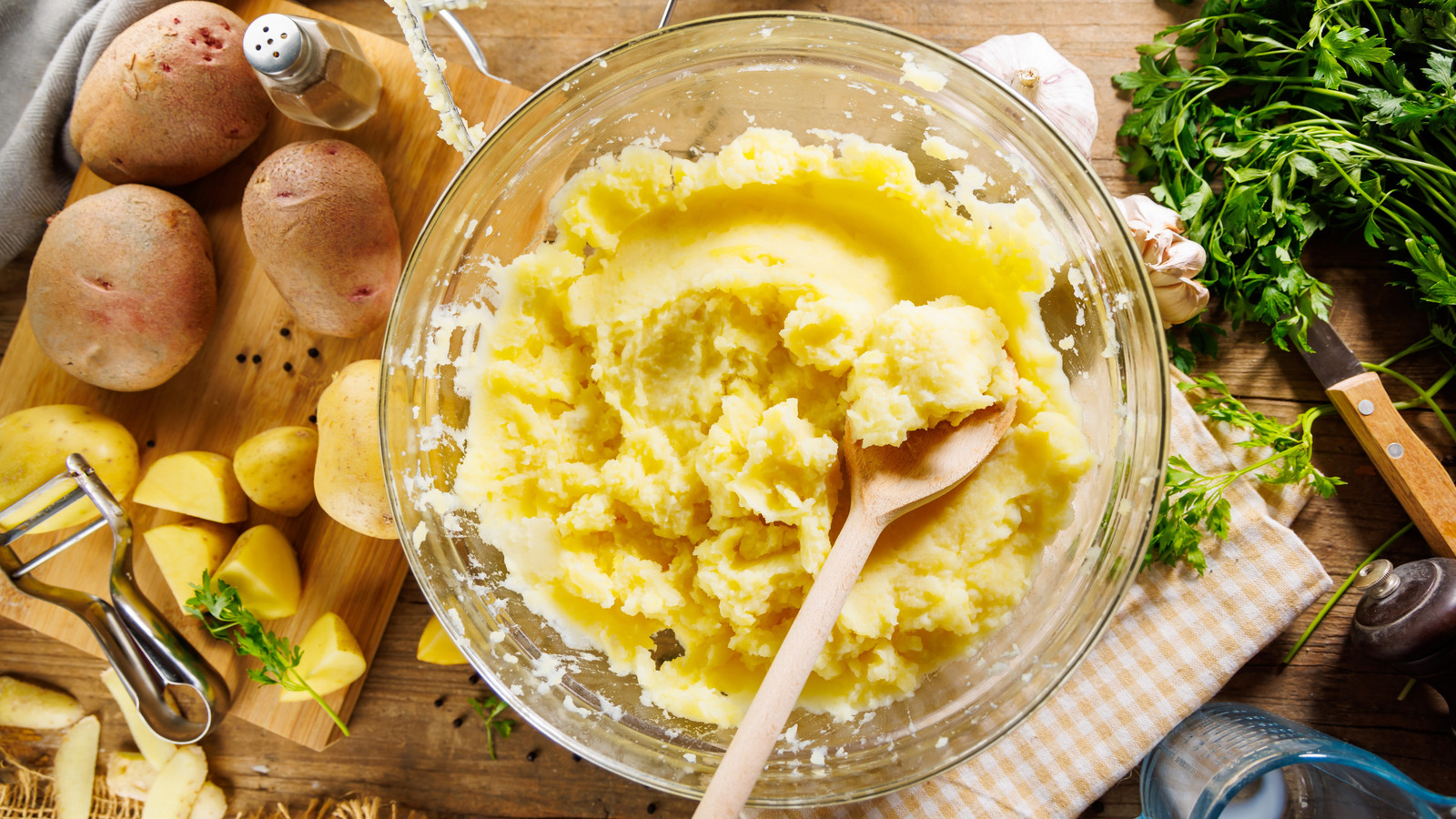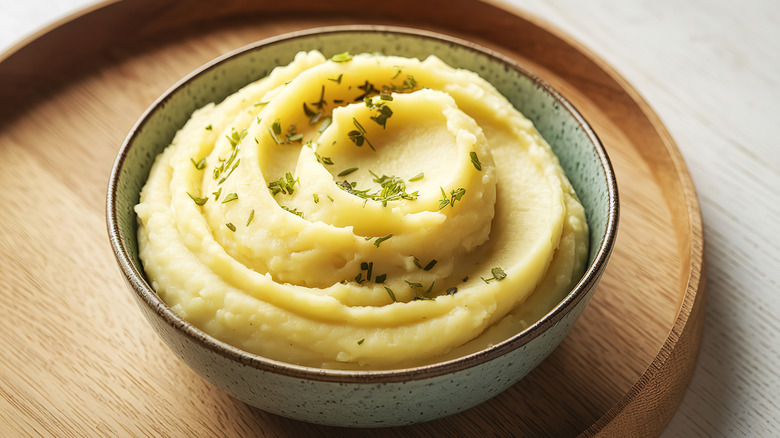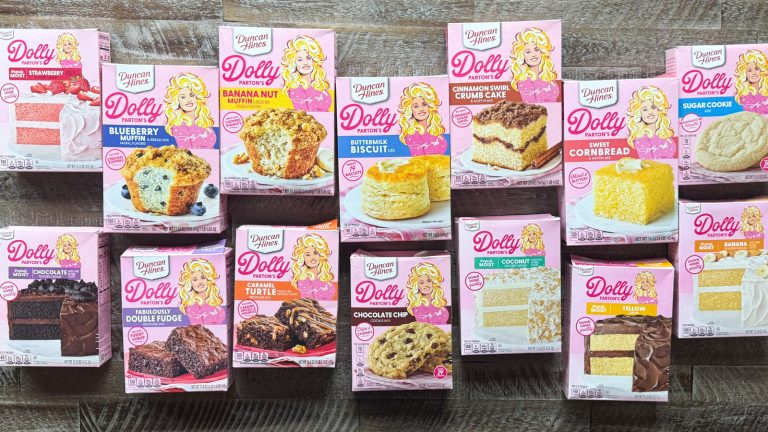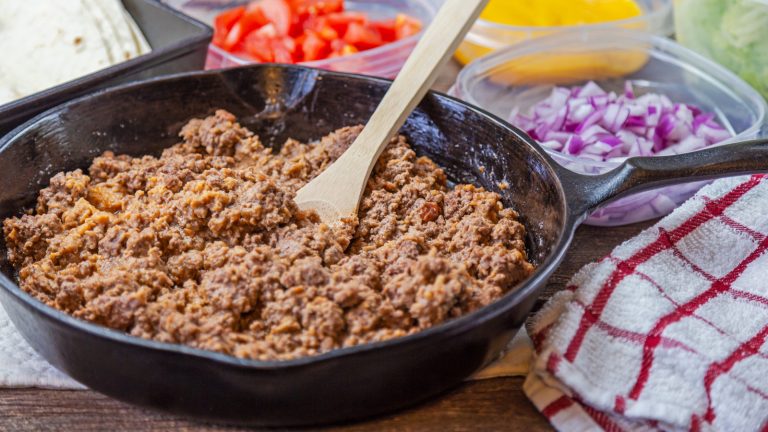Mashed potatoes may just be the world’s most perfect comfort food, both in terms of nutrient density and pure deliciousness. They contain many essential vitamins, minerals, and proteins we need to thrive. The only notable exception is vitamin D, which exists in abundance in butter and whole milk — some of the secret ingredients that just happen to make mashed potatoes taste even better. Yet, if you’ve pulled some premade potatoes out of the freezer, you may be wondering how to avoid reheating them into a grainy, tasteless mess. The key is slow freezing and slow reheating.
Freezing foods effectively can be tricky, especially since the goal here is to preserve your potatoes’ texture and flavor — two things the freezer can ruin, if you’re not careful. The key is to let them cool completely before freezing them either in individual portions or in a single slab, and then storing them in airtight, nonporous, freezer-safe containers. You’ll also want to use gentle heat when thawing and reheating them, as heating them too quickly could cause them to scorch on the outside and remain frozen in the middle.
According to the USDA FoodKeeper app, frozen mashed potatoes remain fresh for about one to two months, giving you easy access to one of America’s favorite side dishes. For this reason, no one can blame you for making an overabundance of this craveable dish, whether you overestimated what you’d need for a holiday feast or were attempting to use up your Yukon golds before they spoiled. Luckily, you needn’t fear that those extra smashed spuds will go to waste.
Tips for successfully freezing your mashed potatoes
To freeze your mashed potatoes in individual portions, either fill the wells of a silicone muffin pan with your potatoes, or use a measuring cup to plop even portions onto a parchment-lined baking sheet. Place them into the freezer for four to eight hours until frozen solid, then store them in a freezer-safe bag or airtight plastic container. This method also doubles as one of those clever meal prep hacks, so you can easily add mashed potatoes to a quick weeknight dinner.
If individual portions aren’t necessary, you can also simply spoon the cooled mash into a single freezer-safe vessel and place it in the freezer. Regardless of the method you use, it’s crucial to ensure your potatoes are totally cool first to avoid ice crystals forming and ruining their texture. You’ll also want to write the date on your container so you know whether your leftover super bacony mashed potatoes are still safe to use as part of a homemade KFC bowl.
When you’re ready to finish off your frozen mash, you can either let your potatoes thaw or reheat them from frozen using your stovetop, oven, or even the slow cooker for ultra-creamy results. However, if you’re using the microwave, you’ll need to use the defrost function before you reheat them. Potatoes reheated from frozen may be slightly watery, but you can fix that by whipping them back together with a little extra butter or other fat.






